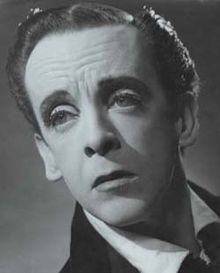Through following the Dutch National Ballet I made the acquaintance of the Dutch teacher and choreographer Yvonne Charlton. Yvonne is married to an Englishman and visits this country frequently. On one of those visits, she gave Powerhouse Ballet a great repertoire class (see Our Best Day Yet 24 Sept 2018). Our ballet mistress, Beverley Willsmer, who is not exactly known for lavish praise, rated her class as the best ever. Before I had even left Z-Studios I was overwhelmed with requests to bring her back as soon as possible.
Yvonne emerged from international arrivals at Ringway airport at 08:20 last Saturday My former ward and her little boy, Vladimir, who had met Yvonne at the National Ballet gala in Amsterdam last September, came with me to meet her. As she would have got up while wilis were still about in order to drive the 32 miles from her home to Amsterdam airport, the first thing we did after she arrived was to entertain her to a full English breakfast at John Lewis's at Cheadle Royal.
Yvonne's first engagement was company class at the Dancehouse at 13:30. As we had some time before that class I gave her a tour of my dear, native city. I started with the castra of Mancunium at Castlefield from which our city derives its name. I showed her the Lowry and some of the paintings in the permanent exhibition. We looked out for a video of Gillian Lynne's ballet A Simple Man with Moira Shearer and Christopher Gable but the assistant at the souvenir shop could not be sure that the DVD would work on continental apparatus.
We arrived at the Dancehouse just in time for class and what a class it was. It was certainly the most taxing that I have ever known and it seemed to challenge even our best dancers. "No! No! No! That's not how you do a port de bras," she said to one of our stars, forcing her head to well below her knees. And Yvonne was not afraid of correcting our ballet mistress the very next day. Even the pliés were a challenge for they finished with a relevé and then a weight shift. Frappés on demi nearly did for me but the real killer was a type of rond de jambe that required a 90-degree sweep from a demi plié. Her centre exercises were no easier than her barre. She set us a rolling pirouette exercise starting with a tiré, a pas de bourré and then single, double or dynamo turns.
As I was 70 a few weeks ago I had told one of my favourite teachers who regards "easy" as a 4 letter word that I was slowing down. Having survived Yvonne's class I know I can survive anything. I told my esteemed instructor that I shall be back at the barre whenever I can get to Leeds by19:00 on a Wednesday evening. Indeed, I am really going to work at that lady's classes.
 After class, I invited my classmates to the Revolution by Oxford Road viaduct for a libation. Almost everyone came and we were joined presently by Karen Sant and Mark Hindle of KNT. For a birthday present Mark gave me this beautiful bouquet of flowers. I curtseyed and tried to remove a single flower for Mark just as I had seen Sibley do for Dowell and Fonteyn for Nureyev in my youth. That would have been a cue for Mark to raise the bloom to his nose and savour the perfume but I am not sure that modern principals do that any more. I have certainly not seen it at Northern Ballet and I am not sure even about Covent Garden. In Holland, it is unnecessary because the boys seem to get flowers too.
After class, I invited my classmates to the Revolution by Oxford Road viaduct for a libation. Almost everyone came and we were joined presently by Karen Sant and Mark Hindle of KNT. For a birthday present Mark gave me this beautiful bouquet of flowers. I curtseyed and tried to remove a single flower for Mark just as I had seen Sibley do for Dowell and Fonteyn for Nureyev in my youth. That would have been a cue for Mark to raise the bloom to his nose and savour the perfume but I am not sure that modern principals do that any more. I have certainly not seen it at Northern Ballet and I am not sure even about Covent Garden. In Holland, it is unnecessary because the boys seem to get flowers too.
After drinks, I drove Yvonne to her hotel near Huddersfield where we threw a little party. Several good friends from Powerhouse Ballet were able to attend as you can see from the photo to the right.
The very next morning we assembled at the Dance Circle Leeds for a 5-hour workshop with Yvonne. I arranged for Alena Panasenka, one of Northern Ballet's accompanists to play for us. I also invited Fiona Noonan to learn any ballet that Yvonne might teach us and coach us in it until we are word perfect.
Our warm-up class after a late night was even more punishing than Saturday class but we set to work with a will. Yvonne taught us a delightful dance to the music of Morning Mood from Grieg's Peer Gynt. We have been invited to perform this piece at Dance Studio Leeds's gala to raise money for St Gemma's Hospice on 12 Oct 2019.
Anyone who wants to audition for this piece should stay for our first rehearsal at Dance Studio Leeds on 23 March 2019. The Eventbrite card will appear shortly.



